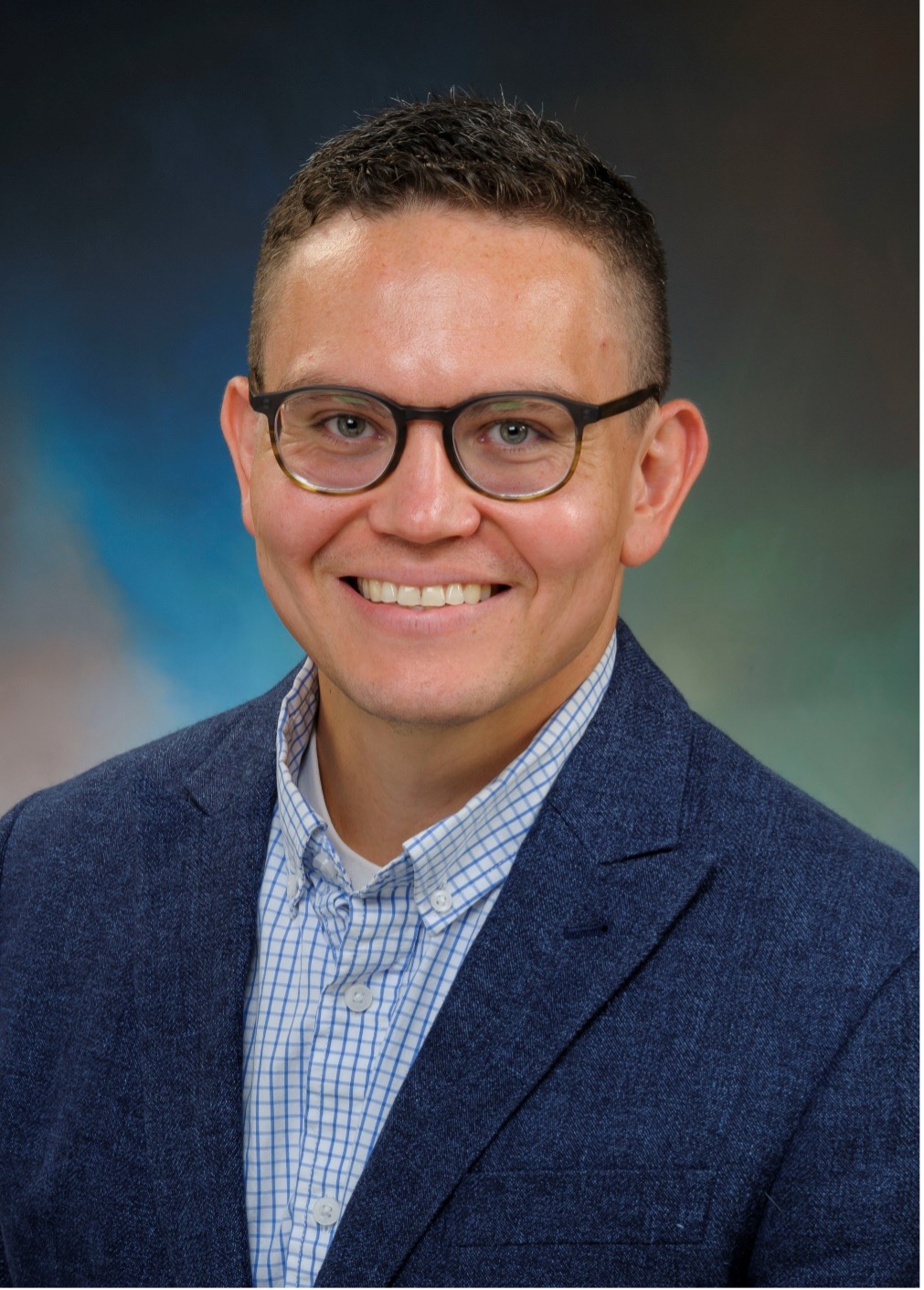Investigating the Therapeutic Potential of N-Acetylcysteine in Alleviating Cocaine-Mediated Microglial Activation
Led by Dr. Palsamy PeriyasamyUniversity of Nebraska Medical Center
Study Overview:
Cocaine abuse poses a significant nationwide concern, impacting the United States, with rising instances in Nebraska. This addiction inflicts severe harm, particularly on the brain, with no existing treatment for mitigating cocaine-induced microglial activation, neuroinflammation, and resultant behavioral changes. Our pilot grant proposal seeks to explore the therapeutic potential of N-Acetylcysteine (NAC) as a target. We hypothesize that NAC can ameliorate cocaine-triggered mitochondrial stress, mito-lysosomal dysfunction, impaired mitophagy, and microglial activation through two key objectives. The first objective involves assessing NAC's therapeutic potential in countering cocaine-induced microglial activation and neuroinflammation in vitro, while the second objective aims to validate NAC's efficacy in mitigating cocaine-induced microglial activation, neuroinflammation, and behavioral alterations in vivo. This study holds promise for targeted therapeutics to mitigate cocaine-related neuroinflammation and behavioral consequences, with potential implications for other neurodegenerative conditions characterized by neuroinflammation.
Specific Aims:
The central hypothesis of this proposal is that NAC administration can alleviate cocaine-induced mitochondrial stress, mito-lysosomal dysfunction, impaired mitophagy, and microglial activation, ultimately ameliorating cocaine-induced neuroinflammation and associated behavioral changes. We will test this hypothesis through two specific aims.
(Aim 1): Determine the therapeutic potential of NAC in alleviating cocaine-mediated microglial activation and neuroinflammation in vitro.
(Aim 2): Validate the therapeutic efficacy of NAC in alleviating cocaine-induced microglial activation, neuroinflammation, and behavioral changes in vivo.
Study Sample Population:
N=15 (pregnant C57BI/6 wild-type mouse dams - and their newborn pups); N=96 (C57BL/6 wild-type mouse, 8-weeks-old).
Long-Term Goals:
The long-term goal of this project is to explore various adjunctive therapies for mitigating the neuroinflammatory and behavioral consequences of drug abuse. By delving into this potential, we aim to expand the available treatment options for drug addiction and associated neuroinflammation, ultimately contributing to better outcomes and improved quality of life for individuals affected by these conditions.

Dr. Palsamy PeriyasamyPROJECT Director
Dr. Palsamy Periyasamy is an Assistant Professor in the Department of Pharmacology and Experimental Neuroscience, UNMC, specializing in epigenetic research. His work delves into the intricate realm of HIV-1, substance abuse, and their impact on neuroinflammation. By deciphering the epigenetic landscape, particularly focusing on promoter DNA methylation and non-coding RNAs, Dr. Periyasamy aims to uncover the underlying mechanisms that activate microglia and astrocytes, contributing to NeuroHIV. These investigations encompass various substances, including cocaine, morphine, methamphetamine, and alcohol. The knowledge gained from this research holds promise for innovative therapeutic strategies, addressing the challenges of HIV-associated neurocognitive disorders in the era of combined antiretroviral therapy.
Developing an Advanced Technology for Emotion and Affective Change ePlatform (AT-REACH) for People Recovering from Substance Use Disorders
Led by Dr. Dennis McChargueUniversity of Nebraska-Lincoln
Study Overview:
The current proposal aims to create and test a novel web-based and smartphone accessible emotional regulation training for homeless recovering from substance use disorders that reside in residential treatment facilities. After creating the ePlatform training app using co-creation methods with stakeholders and computer scientist in Year 1 (Aim 1), researcher will test the hypothesis that a somatic avatar training practiced and reinforced daily across time (30 days) via the smartphone accessible ePlatform will produce greater improvements in emotion regulation skills as compared with a recall only control condition (Aim 2). To accomplish this goal, we will recruit 40 residential treatment participants (20 male; 20 female) across 8 months in Year 2 of the grant. Lastly, we aim to qualitatively and quantitatively evaluate the usability, accessibility, and potential applicability of the emotion regulation training among study participants and treatment staff following the RCT. This project will provide foundational evidence of a novel treatment paradigm applied to a marginalized population at high risk of relapse due to emotion dysregulation challenges.
Specific Aims:
The current application is viewed as an essential capacity building effort critical to developing a program of research in just-in-time, adaptive interventions (JITAI)29 that operantly condition adaptive coping behaviors. The overarching aim is to create a highly secure ePlatform where CRF residents access a socially and individually reinforced emotion regulation intervention via a mobile device. The ePlatform specific aims are three-fold through using mixed methods and a co-creation process with stakeholders (residents and treatment staff):
(Aim 1): Develop prototype of a mobile accessible emotion regulation ePlatform with assessment, access, and interactive capabilities using feedback from focus group interviews with stakeholders. (Yr1)
(Aim 2): Collect Phase I RCT feasibility data that the ePlatform via mobile delivery enhances and reinforces adaptive emotion regulation abilities through daily emotional processing practice among 40 residents (20 male; 20 female) across a four-week period. (Yr2)
(Aim 3): : Qualitatively and quantitatively evaluate perceptions of acceptability, usability, and applicability of the mobile accessible ePlatform emotion regulation training from stakeholders. (Yr2)
Study Sample Population:
Community Members who reside in a transitional living facility for those recovering from substance use disorders.
Unique Study Procedures:
Employing a novel phone app that reinforces emotion regulation skills taught in yoga training. The use of animated digital humans that represent the emotions experiences in the yoga training. Uploading animated digital humans on AT-REACH app for emotional process to evoke somatic memories of yoga training.
Long-Term Goals:
To develop a process of reinforcing and expanding emotion regulation practices with a person’s nature environment using mhealth technologies. Establish a mhealth treatment that reduces relapse risk among those recovering from substance use disorders.

Dr. Dennis McCharguePROJECT Director
Dr. McChargue is a Professor of Psychology and Director of Clinical Training for the Clinical Psychology Training Program at the University of Nebraska-Lincoln. Dr. McChargue received his doctoral training at Oklahoma State University with a clinical psychology internship at the Boston VAMC Consortium, which houses one of the National Centers for PTSD. He was later a postdoctoral fellow and research faculty member with a joint appointment at the University of Illinois at Chicago and the Hines VAMC. Dr. McChargue’s primary expertise is in understanding biobehavioral mechanisms that bind substance use with mental illness and hinder recovery from substance use patterns.
Use of Omega-3 Fatty Acids to Inhibit Drug-Induced Inflammation and Synaptic Alterations
Led by Dr. Jana PonceUniversity of Nebraska Medical Center
Study Overview:
Repeated exposure to psychostimulants, including methamphetamine (METH), induces a chronic inflammatory state and synaptic alterations which are associated with psychological and behavioral deficits as well as neurodegenerative diseases. Emerging evidence suggests an essential role for neuroinflammation3 and synaptic plasticity in promoting addiction-related brain and behavioral deficits for which there are currently no effective pharmacological treatments. This study aims to research how omega (n)-3 fatty acids (FA) impact behavioral deficits through resolution of inflammation and synaptic alterations in people suffering from METH-substance use disorder (SUD), a population at risk for both n-3 FA deficiency and neuroinflammation. Our overarching hypothesis is dietary n-3 FA mitigates METH-induced neuroinflammation, synaptic alterations and subsequent behavior changes.
Specific Aims:
(Aim 1): Determine if dietary n-3 FA supplementation mitigates METH-induced systemic inflammation.
(Aim 2): Investigate the impact of n-3 FA supplementation on mechanisms associated with chronic METH-induced synaptic alterations and behavior changes.
Study Sample Population:
These preclinical experiments will be conducted in male and female Sprague Dawley rats (24 males and 24 females).
Unique Study Procedures:
Sprague Dawley rats will be randomly assigned to receive either normal diet (ND) or enhanced diet (ED). For the latter, soybean oil from the base diet is replaced with an oil containing omega-3 fatty acids, providing the animals with approximately 1.4% of their total caloric intake strictly from the omega-3 fatty acid DHA.
Long-Term Goals:
The long-term goal of this research are to identify novel mechanisms associated with neuroinflammation and resulting behavior change in order to develop non-invasive, non-addictive and low-cost therapeutic intervention strategies for individuals with SUD.

Dr. Jana PoncePROJECT Director
Dr. Jana Ponce is a Registered Dietitian and an Assistant professor in the Medical Nutrition Education Division of the College of Allied Health Professions at the University of Nebraska Medical Center in Omaha, Nebraska. Her background is in clinical nutrition with a current research agenda focused on the impact of nutrition interventions in improving neurologic outcomes and inflammation in chronic disease.
Feasibility of Assessing the Effects of Substance Use on Auditory and Vestibular Function
Led by Dr. Amanda Rodriguez & Dr. Michelle HughesUniversity of Nebraska-Lincoln
Co-Investigator:
Kenneth Zoucha, MD, University of Nebraska Medical Center Assistant Professor Psychiatry Director-Division of Addiction Medicine
Study Overview:
This pilot project aims to evaluate the feasibility of obtaining auditory and vestibular (balance) function outcomes in a substance-misuse population.
Specific Aims:
(Aim 1): To establish recruitment sources for participants who chronically misuse substances and are in different stages of use (i.e., active, recovery, relapsed).
(Aim 2): To determine the feasibility of implementing a comprehensive auditory and vestibular test battery for people who misuse substances.
Study Sample Population:
We seek to enroll a minimum of 30 adults with a substance use history. Participant groups will include people: (1) in the community with active substance use, (2) who are diagnosed with a substance use disorder and currently in treatment, and (3) who have relapsed after having active recovery either on their own or through a treatment program.
Unique Study Procedures:
This project will be the first to systematically assess both auditory and vestibular function within a substance use population using a comprehensive battery of physiological and behavioral metrics that assess both peripheral and central functions, so that site-of-lesions can be identified.
Long-Term Goals:
This project’s results will provide pilot data for a subsequent larger-scale study to characterize auditory and vestibular function in people who chronically use substances and determine how health and use factors might exacerbate hearing and vestibular loss. Results will reveal the magnitude of alcohol and drug-induced hearing or vestibular loss and justify the need for diagnostic monitoring for people seeking treatment for substance-use disorder. Furthermore, this work will inform specific rehabilitative strategies that could also be implemented through telehealth to better reach rural communities where social and economic impacts of untreated hearing or vestibular loss are compounded by other healthcare disparities.

Dr. Michelle HughesPROJECT Director
Michelle Hughes, PhD, CCC-A is an Associate Professor and Director of the Cochlear Implant Research Laboratory (CIRL) at the University of Nebraska-Lincoln in the Department of Special Education and Communication Disorders. She received her MA in Audiology and PhD in Hearing Science from the University of Iowa, and completed her clinical fellowship in the Department of Otolaryngology—Head and Neck Surgery at the University of Iowa Hospitals and Clinics. Research interests involve examining the relation between physiology and perception in cochlear implants, investigating ways to incorporate telepractice into cochlear implant service delivery, and exploring ototoxicity effects secondary to substance misuse.

Dr. Amanda RodriguezPROJECT Director
Amanda Rodriguez, AuD, PhD, CCC-A is an Assistant Professor and Director of the Concussion and Vestibular Evaluation (CAVE) Laboratory at the University of Nebraska-Lincoln in the Department of Special Education and Communication Disorders. She is also a Resident Faculty member in the Center of Brain, Biology and Behavior. She received her AuD/PhD in Audiology and Vestibular Function-Assessment from Texas Tech University Health Sciences Center. She then completed a T32 post-doc fellowship at Boys Town National Research Hospital. Her research interests include examining the effects of sports concussion on the vestibular system and identifying modifiable health risk factors associated with vestibular loss. Dr. Rodriguez is also a practicing vestibular audiologist in the community.
A Critical Examination of the Incidence of Neonatal Opioid Exposure in Rural Nebraska
Led by Dr. Ann Anderson BerryUniversity of Nebraska Medical Center
Co-Investigator:
Kenneth Zoucha, MD, Assistant Professor of Psychiatry and Director of Division of Addiction Medicine, University of Nebraska Medical Center
Study Overview:
This pilot project aims to elucidate rural Nebraska incidence of intrauterine opioid and substances of abuse exposure to identify evidence based educational interventions and treatment opportunities.
Specific Aims:
(Aim 1): Assess the risk of intrauterine opioid exposure and NOWS from opioids prescribed during pregnancy in rural Nebraska newborns.
(Aim 2): Develop a method to survey polysubstance exposure in late pregnancy across rural Nebraska.
Study Sample Population:
This project will use innovative methods with NEHII (Nebraska’s Health Information Initiative) to enumerate opioid prescriptions to women during pregnancy and compare those rates with local diagnoses of NOWS.
Unique Study Procedures:
This project will utilize an educational module with rural delivery health care providers (physicians, nurses, pharmacists) to ensure staff have an evidenced based process to: minimize maternal opioid prescriptions, identify and initiate treatment for maternal opiate use disorder, recognize and diagnose neonates impacted by maternal opiate use, and care for them accordingly.
Long-Term Goals:
Findings from this proposal with inform our long-term goal of decreasing use and increasing access to care. Results from this project will further inform outreach, prevention and treatment efforts in the perinatal population of rural Nebraska. Additionally, we will disseminate our results (success and failures) to the medical community so that other rural states can utilize similar methodology to impact their rural perinatal populations.

Dr. Ann Anderson BerryPROJECT Director
Dr. Ann Anderson Berry is the Vice-Chair of Research and Professor in the Department of Pediatrics, Interim Executive Director of the Child Health Research Institute (CHRI) at UNMC, Division Chief of Neonatology, and the medical director of a high acuity level III NICU and newborn nursery. Her long-term goal is to understand the implications of perinatal health research findings in communities.
Somatic Avatars: A Creative and Embodied Approach to Support Addiction Recovery
Led by Anna HensonUniversity of Nebraska-Lincoln
Co-Investigator:
Dr. Dennis McChargue, Associate Professor of Psychology, University of Nebraska-Lincoln
Study Overview:
Bridging creative, technical, and socio-behavioral research, this pilot study will create and deliver a curriculum designed to support people who use drugs (PWUD) in recovery from addiction. Building from research supporting the use of yoga and mindfulness techniques in SUD treatment, as well as creative arts therapies, participants will experience movement sessions and avatar design sessions, culminating in the creation of a “Somatic Avatar.” Somatic Avatars are visual 3D personal representations created with software, incorporating movement and metaphor designed by the participants. Drawing from research in games and online identity presentation, the Somatic Avatars aim to be a tool to explore participants’ experience with addiction and recovery, and to externalize and communicate experiences which can be difficult to verbalize. Sessions will include embodiment and visual expressive practices exploring emotional identification and regulation as well as personal identity and representation. The research team will work in a relational way with study participants, to see and validate participants’ experience and stories, reduce stigma, and help facilitate the creative and technical processes involved. Using a mixed methods approach, data will be collected during the workshops in order to analyze the impacts of the designed curriculum, contributing to possible future therapeutic uses.
Future research building on this pilot study would aim to create and distribute a “Somatic Avatar Toolkit” based on this curriculum, utilizing open source software tools, movement methods, and workshop facilitation guidelines, in addition to support resources. With consent and anonymity, some of the material generated in the workshops may become material for a public exhibition, to share the stories of our participants and resources for support and help with addiction and recovery.
Specific Aims:
(Aim 1): To investigate new methods for the integration of creative arts based programs and therapies within PWUD (people who use drugs) populations.
(Aim 2): To contribute to research utilizing participant-focused, co-designed methodologies, within socio-technical and socio-behavioral research.
(Aim 3): To draw connections between cognitive therapies and less commonly implemented arts and movement therapies.
(Aim 4): To deliver skills-based curriculum with study participants in which various movement, somatic, and arts techniques will be explored.
(Aim 5): To facilitate creative expression as a supportive tool during addiction recovery.
(Aim 6): To help participants learn somatic resourcing as a tool for emotional regulation and support during their treatment and recovery journeys.
(Aim 7): To raise awareness, tell the stories, and combat stigma of populations struggling with drug addiction, and make results and resources accessible to communities at low/no cost.
(Aim 8): To practice harm reduction and inclusive, trauma-aware best practices through non-judgemental discussion and cultivation of safe, accepting, and non-coercive space.
Study Sample Population:
In total we seek to recruit 30-35 adults with a substance use history to participate in the proposed project.
We first seek to conduct a mini-pilot study with two groups of 5 participants. Then we seek to conduct a larger pilot with 20-25 participants.
Unique Study Procedures:
1. Movement Practices (i.e. dance, meditation, trauma-informed yoga)
2. Avatar Creation (technical, artistic, and psychological components)
Long-Term Goals:
This project aims to directly support participants in the recovery process by offering participants new skills, vocabulary and techniques. The project also aims to contribute to research in creative arts therapies with this population. Results from this pilot will provide the framework for the creation and distribution of a “Somatic Avatar Toolkit” to community centers, treatment centers, universities, and libraries, as well as further research at the intersections of Human Computer Interaction, Media Literacy, and Mental Health.

Anna HensonPROJECT Director
Anna Henson is an Assistant Professor of Practice at the Johnny Carson Center for Emerging Media Arts at UNL. She is an artist, researcher, and educator in emerging media arts, with a background spanning theatre, media production, immersive technologies, and human computer interaction research. Her hybrid experience informs her design methodologies and critical perspectives within media, AR/VR, and body-centric technologies. Henson strives to build interdisciplinary and inclusive dialogue through shared language and new processes, and connect diverse ideas, populations, and causes together to creatively solve problems. She holds a Bachelor of Special Studies in Fine Art and Art Therapy from Cornell College, a Master of Fine Arts from The Glasgow School of Art, and a Master of Science in Computational Design from Carnegie Mellon University. Henson has contributed research to ACM and DIS publications, and has worked in art therapy with children, teens, and adults experiencing trauma and mental illness. She has volunteered in arts and play therapy for hematology and oncology patients in children’s hospitals and completed a certification in Mental Health First Aid with the National Council on Behavioral Health. Henson is committed to community-based programs and equity in creative arts, education, and broader health and wellbeing.
The Serotonin 5-HT2AR, a Novel Non-Opioid Target for Opioid Use Disorder
Led by Erik GarciaUniversity of Nebraska Omaha
Study Overview:
This project seeks to uncover a non-opioid target that is 1) functionally unaffected by chronic administration of oxycodone and 2) able to reduce the reinforcing value of oxycodone. Together these properties would have the capability to decrease the abuse potential of prescription opioids.
Specific Aims:
(Aim 1): Determine the functional status of the 5-HT2AR following oxycodone exposure.
(Aim 2): Uncover the efficacy of the 5-HT2AR to exert control of oxycodone reinforcement.
Study Sample Population:
These preclinical experiments will be conducted in male and female rats..
Unique Study Procedures:
This project utilizes strong behavioral neuropharmacology experiments to provide insights into the neural mechanisms of opioid reinforcement. Dr. Garcia will use statistical modeling and theoretical frameworks borrowed from behavioral economics to analyze the extent to which the 5-HT2AR modifies oxycodone consumption.
Long-Term Goals:
The long-term goal of this project is to develop a new class of selective and therapeutically useful 5-HT2AR small molecules for the treatment of opioid use and substance use disorders. The pilot grant will reveal the extent to which the 5-HT2AR reduces oxycodone reinforcement value. This project will have a lasting impact because prescription opioids are effective analgesics but have the potential for abuse. These experiments may reveal that 5-HT2AR drugs could be used to reduce the abuse potential of prescription opioid medications, making them safer for chronic use.

Erik GarciaPROJECT Director
In Fall 2021, Dr. Garcia started his career as Assistant Professor of Neuroscience and Behavior at the University of Nebraska Omaha. He researches the neurobiological mechanisms that dictate the consumption of rewards and reinforcers. After completing his doctoral degree in Experimental Psychology (Behavioral Neuroscience), he went to the University of Texas Medical Branch at Galveston to complete his postdoctoral training. There in the laboratory of Kathryn Cunningham, Ph.D., he researched serotonin and other G protein-coupled receptors families. Dr. Garcia helped reveal a novel series of 5-HT2CR and 5-HT2AR allosteric modulators that alter high-fat food consumption and cocaine and fentanyl relapse.
Re-imagining Place: Rural Substance Use Disorder, Worldbuilding and Community Participatory Design
Led by Ash Eliza SmithUniversity of Nebraska-Lincoln
Study Overview:
In this project we seek to demonstrate the power of community engagement in worldbuilding as a way to integrate substance use disorder (SUD) prevention, treatment, and recovery into planning for community wellbeing.
Specific Aims:
The overall goal of the project is to develop a transdisciplinary approach to SUD/mental health prevention, intervention, and treatment using speculative design and worldbuilding in a participatory community wellbeing change process.
Study Sample Population:
Year 1: Alliance/Sandhills, Nebraska
Unique Study Procedures:
Co-creation, Worldbuilding, Speculative Design

Ash Eliza SmithPROJECT Director
Ash Eliza Smith is an artist-researcher who uses storytelling, worldbuilding, and speculative design to shape new realities. With performance as both an object and lens, Smith works across art and science, between fact and fiction, and with human and non-human agents to re-imagine past and future technologies, systems, and rural-urban ecologies. She is an Assistant Professor of Emerging Media Arts at UNL and grew up in the foothills of the Appalachian Mountains in North Carolina. Smith has worked as a producer, director, performer, and writer for various studios and media platforms. Her research lab within the Carson Center of Emerging Media Arts: Southern Devices, uses simulation, design fiction and narrative to solve problems, re-imagine systems, and build worlds with emerging technologies.
The Impact of Parental Alcohol Use on Child Emotion Socialization Across the Transition to Formal Schooling
Led by Becca BrockUniversity of Nebraska-Lincoln
Study Overview:
Parental alcohol use has the potential to negatively impact child development by undermining adaptive emotion regulation, a transdiagnostic predictor of later psychopathology. For example, acute alcohol intoxication can undermine a parent’s sensitivity and responsiveness when a child is distressed, compromising a parent’s ability to teach adaptive emotion regulation skills.
Parents who use alcohol to regulate their own emotions might also model alcohol use as a way of coping with distress, which could shape a child’s own alcohol expectancies and motives for drinking. However, few studies have directly investigated the potential for parental alcohol use—even use that does not rise to the level of abuse—to undermine the process through which parents socialize their children to their emotions and, in turn, the development of emotion regulation skills in children.
The objective of this project is to determine the impact of parental alcohol use on emotion socialization across the transition to formal schooling, a key developmental period when children depend on emotion regulation skills to confront new academic and socioemotional challenges in the context of increasing autonomy. The central hypothesis to be tested is that parental alcohol use patterns across this transition will undermine key dimensions of emotion socialization (i.e., modeling of adaptive emotion regulation skills, a safe and secure family emotional climate, supportive parenting behaviors in response to child distress).
Specific Aims:
(Aim 1): Determine the impact of parental alcohol use on emotion socialization of the child following the transition into formal schooling. We will use lab-based paradigms, behavioral observations, and surveys to assess emotion socialization. We hypothesize that more frequent and heavy alcohol consumption and more alcohol-related impairments, such as failing to meet responsibilities, when children are three to eight will be associated with greater deficits in emotion socialization at age eight. We also expect that greater parental motives and expectancies for drinking alcohol to avoid emotions will correlate with poorer emotion socialization.
(Aim 2): Establish the accuracy, feasibility, and validity of a next-generation continuous-time interaction and responsive ecological momentary assessment to assess real-world and real-time emotion socialization. We will pilot an adaptation of the RDAR Center’s Open Dynamic Interaction Network (ODIN) technology to measure emotion socialization processes to determine the impact of long-term patterns of parental alcohol use on these dynamic, daily socialization processes. We will examine (a) accuracy in detecting parent-child interactions by tracking proximity using Bluetooth capabilities (i.e., true positive rates), (b) feasibility, as indicated by response rates to survey prompts following detected interactions, and (c) incremental predictive validity of ODIN scores in explaining child emotion regulation beyond established measures of emotion socialization.
Study Sample Population:
An existing cohort of 151 families who have participated in a long-term longitudinal study spanning pregnancy to preschool will be leveraged.
Unique Study Procedures:
Longitudinal, Responsive Ecological Momentary Assessments, Child Narratives of Family Experiences, Behavioral Observations
Long-Term Goals:
Our long-term goal is to identify modifiable factors within the family, including parental behaviors such as alcohol use, that impact child development and self-regulation.

Becca BrockPROJECT Director
Dr. Brock received her Ph.D. in clinical psychology from the University of Iowa. She is a faculty member in the Clinical Psychology Training Program, the Quantitative Training Coordinator in the Department of Psychology, and the director of the UNL Family Development Lab. She is also associate editor for the journal Family Process. Broadly speaking, her research is aimed at understanding how couple and family relationships impact depression, anxiety, and alcohol use. Her research has been funded by the National Institutes of Health. She was a recipient of the UNL Dean's Award for Excellence in Graduate Education for teaching and mentoring.
Understanding Transportation Barriers to Substance Use Disorder Treatment and Enhancing Access in Rural Nebraska
Led by Abigail CochranUniversity of Nebraska-Lincoln
Study Overview:
Transportation-related barriers pose significant challenges for individuals seeking access to health care services, particularly affecting vulnerable populations, including people with disabilities, frequent health care users, and rural residents. Such barriers are known to affect the over 20 million Americans with a substance use disorder (SUD) diagnosis and have been shown to critically impact individuals seeking SUD treatment. In Nebraska, where rural areas face considerable health care access disparities, addressing transportation barriers to care is crucial. In this project we aim to identify and address transportation obstacles to accessing SUD treatment in Nebraska, focusing on understanding accessibility and characterizing barriers in underserved rural communities.
Specific Aims:
(Aim 1): Geospatial and Temporal Analysis of Accessibility to SUD Treatment Facilities. Our first aim is to conduct comprehensive spatiotemporal analyses to evaluate travel time-based accessibility for individuals with SUD.
(Aim 2): Qualitative Exploration of Transportation Barriers through Semi-Structured Interviews. Our second aim involves gaining insights directly from practitioners involved in SUD treatment. Through semi-structured interviews, we aim to capture a nuanced understanding of transportation barriers faced by individuals seeking treatment in rural Nebraska.
Overall, by combining spatiotemporal analysis with qualitative exploration through practitioner interviews, we expect to provide a comprehensive understanding of transportation barriers to SUD treatment in rural Nebraska. The ultimate goal is to inform targeted interventions and programming that address transportation barriers to care, enhance accessibility, promote health equity, and improve health outcomes for individuals with SUD living in underserved rural settings.
Study Sample Population:
Individuals with a substance use disorder diagnosis living in Nebraska.
Long-Term Goals:
This work will, importantly, advance understanding of the role of transportation access in SUD treatment, particularly in rural settings, relying on both quantitative and qualitative interpretations. Our approach and findings can assist transportation and health professionals in identifying areas of high risk and high need, and tailoring locally sensitive, creative, and innovative interventions for such areas that could be particularly effective. By contributing to understanding transportation’s vital role as a social determinant of health as it relates to substance use and misuse, this research closely aligns with the Rural Drug Addiction Research Center’s mission of addressing the treatment of this critical public health challenge from a holistic perspective. Results will be able to inform health-promoting planning, policymaking, and practice within and beyond Nebraska, with implications for addressing pressing transportation and health equity issues facing vulnerable, underserved populations in rural settings.

Abigail CochranPROJECT Director
Dr. Abigail Cochran holds a Master of City Planning and Ph.D. in City and Regional Planning from the University of California, Berkeley. She is broadly interested in travel behavior, transportation policy, disability, aging, and health. She is an Assistant Professor of Community and Regional Planning at the University of Nebraska–Lincoln.